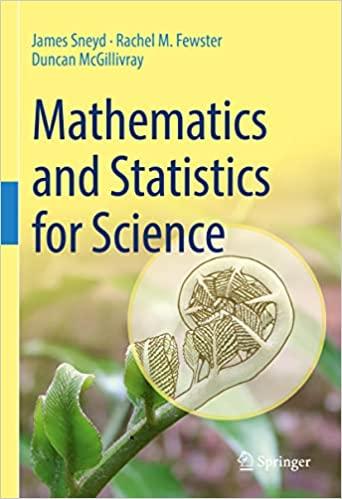Optimal foraging theory is a theory that animals spend the optimal amount of time collecting food from
Question:
Optimal foraging theory is a theory that animals spend the optimal amount of time collecting food from a single food patch. The theory is not without controversy, but it does seem to be a valuable way of interpreting animal behaviour in some situations.
The word "optimal" means different things for different animals. For example, honey bees don’t want to carry too heavy a load, while predators don’t want to spend everincreasing amounts of time searching for a depleted prey source.
The fundamental assumption is that the amount of resource collected from the food source decreases over time, either as the food source is depleted, or as the prey become wary and hide. The longer the animal takes to collect the resource, the less efficient the foraging is, so each animal wants to spend just the right amount of time at the food source; long enough to collect all the easy food, but not so long that a lot of energy is wasted on finding the difficult food.
Typical data from house martins (a kind of swallow) are shown in Fig. 17.13.
In a simple model, assume that the amount of food, F, gained (at a single food source) is given by F(t) = F0 t K + t , where t is the time spent foraging, and F0 and K are positive constants.
a. Plot F(t) and explain why this is a reasonable approximate model of foraging. What is the scientific interpretation of F0? What is the scientific interpretation of K?
b. What is the rate of food collection (i.e., F 0 (t))? How does the rate of food collection behave as a function of time?
What happens to the rate of food collection as t → ∞?
What are the scientific interpretations of these results?
c. Now suppose that the efficiency, E, of foraging is determined by the amount of food collected, divided by the time taken to collect this food. However, the time taken to collect the food has to include the time taken to travel to the food source. We’ll call this travel time, T. Hence, E(t) = F(t)
T + t .
Calculate the optimal foraging time, i.e., the time that yields the greatest foraging efficiency.
Hint: the optimal foraging time will be a function of T and K, but not of F0.
d. Think of (and justify!) another reasonable choice for F(t).
If you’re feeling ambitious, try to calculate the optimal foraging time for your choice. But be warned; it might be difficult to do.
Step by Step Answer:

Mathematics And Statistics For Science
ISBN: 9783031053177
1st Edition
Authors: James Sneyd, Rachel M. Fewster, Duncan McGillivray





